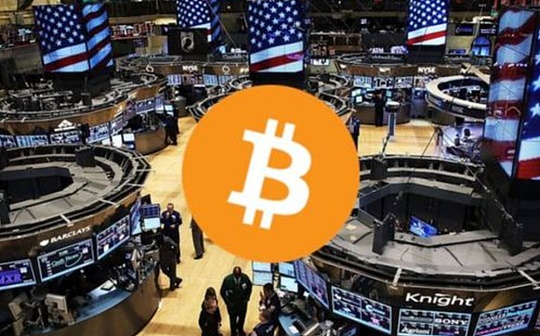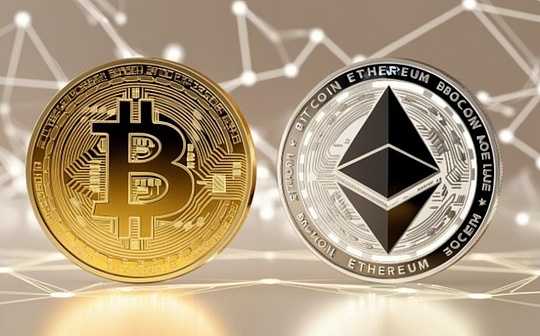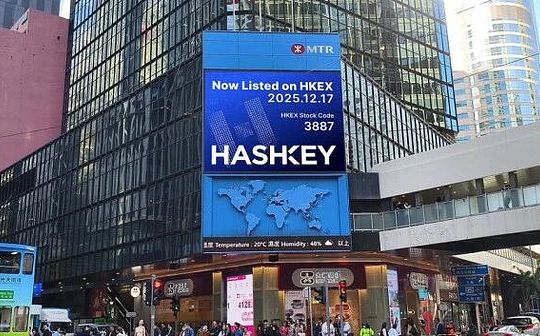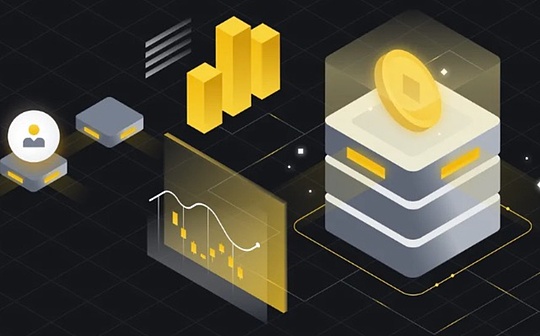
Author: DWF Labs Research Translation: Shan Ouba, Bitchain Vision Realm
In our previous article, we introduced sustainable contracts -including the evolution of existing perpetual DEX and the potential development of the field.
In this article, we will discuss the current token economics pattern of permanent DEX, analyze different mechanisms used by the agreement, and discuss the potential development of the future.
Why is it important token economics?
Token economics is essential for the development and stability of the agreement.With the experience of “DEFI Summer”, liquidity mining successfully guided the income agreement in the early days, but in the long run, it was ultimately unsustainable.This mechanism has attracted the capital of only profit, which has formed a vicious circle of “planting and dumping”. Farmers constantly find the next agreement to provide higher output, but the planting agreement has been devastated.
One of the examples was Sushiswap’s vampire attack on UNISWAP. At first, it successfully attracted a lot of TVL, but eventually it could not continue.At the same time, agreements such as AAVE and Uniswap focus on product priority and successfully attract and retain users. The sustainable token economy has also helped consolidate their position as a market leader.Words.
>
Although the growth of products is important, token economics is a significant factor in the sustainable DEX in the competitive market.The tokens represent users’ evaluation of the agreement based on their activities, similar to the way stocks reflect the company’s predictive performance.Unlike the traditional market, token prices are usually a wide range of cognition and growth in encryption projects.
Therefore, it is very important to have tokens that accumulate value from the growth of the agreement.It is also important to ensure that a sustainable token economy is also providing sufficient incentives for new users.Overall, good token economics is the key to achieving long -term growth and preservation of the value of agreement.
Review: Sustainable DEX pattern
In our previous series of articles, we have widely introduced the evolution and mechanism of sustainable DEX.The token economics of these agreements -DYDX is one of the first companies to introduce sustainable contracts on the chain in 2020, and launched its tokens in September 2021.This token is pledged, LP and transaction awards, because except for transaction fees discounts, they did not provide the holder with too much practicality.
The unsustainable problem for emissions is GMX, which entered the market in September 2021.GMX is one of the earliest companies that introduce the pool mode and user cost sharing mechanism. This mechanism obtains the income from the transaction fee and is paid in the form of professional and payment.Native token.Its success has also led to the creation of more Peer-TO-POOL model systems, such as Gains Network.Its mortgage model and income sharing parameters are different, which is low in risk caused by users, but also low yields.
Synthetix is another OG Defi protocol in this field. It supports multiple front -end of perpetual and options exchanges, such as Kwenta, Polynomial, Lyra, DHEDGE, etc.It uses a synthetic model, and users must use their SNX token as a collateral to borrow SUSD for them to trade.The pledgers received the SUSD cost generated by all front -end transactions.
Sustainable DEX Tolerance Economics: Comparison
The following table shows the comparison of different protocols in the tokens:
>
Create a good token economics: the factors that need to be considered
The well -designed token economics requires careful consideration of various factors to create a system that can coordinate participants incentives and ensure the long -term sustainability of the token.We will discuss the following factors based on the current pattern of permanent DEX token economy.
1. Incentives and rewards
Incentives and rewards play an important role in encouraging ideals.This includes a mechanism for pledge, transactions, or other encouraging users to contribute to the agreement.
1A.
Pledge is a mechanism for revenue by depositing the native token in exchange for the income.The income obtained by the user is either sharing through the income from expenses (it can be a larger upper limit tokens/stablecoin) or the local token emissions.Judging from the agreement we analyze, there are three main types of pledged pledge:
-
Main or stable coin cost sharing
-
Sharing of native token fees
-
The emissions shared by the original currency
-
Reduce the circulation supply of the tokens (and the pressure of selling)
-
Only when the output generated is not effective when it is pure emission, to ensure sustainability
-
The income generated by major currencies or stable coins will reduce the pressure of selling, because users can “realize” their income without selling
-
With the development of the agreement and the increase in the cost of each token, the value of the tokens can increase indirectly
-
Having a stable token yield can also attract non -traders to enter just to earn income
-
Life and reward type
-
Considering that users who avoid risks do not need to sell tokens to “realize” benefits, it is very important to have a stable return.
-
The emissions rate is also very important. It can ensure that the income received by the user will not fluctuate too much and can continue for a period of time.
-
The lower entry threshold and easy to earn rewards (no prepaid funds, no acquisition, etc.) may attract users who are profitable as the map, thereby diluting the rewards of active users (active traders, long -term stakeholders, etc.)
-
GLP’s TVL is significantly higher than GDAI -maybe because of higher output
-
The risk of losses of GDAI users is low, and the profit of traders is supported by GNS coins, while GMX pays user funds through GLP
-
Users with higher risk aversion will be attracted by GLP with higher yields, while users with lower risk dislocation can save them into GDAI when they have low returns
-
Provide most income shares to stakeholders/limited partners
-
Gambit only allocates 40% income share (20% to USDG + 20% to the Gambit pledker) to the holder/pledker, and the GMX V1 is allocated 100% (70% to GLP + 30% to GMX pledge)
-
Increased a good narrative for the income of the pledged/limited partner, attracting a wider audience except for pure traders
-
Transfer risks to limited partners who are direct transactions opponents
-
Gambit only distributes 20% income share to USDG, while GMX allocates 70% income share to GLP
-
Both USDG and GLP are cast by saving assets, providing liquidity for platform transactions.The reason for Gambit to provide lower yields to LP is that USDG is a stablecoin, and the platform divides 50% of income into mortgage to ensure that LP’s funds are redemption.In contrast, GMX transferred risks to limited partners.
-
GMX V1: 30% is assigned to GMX pledges and 70% assigned to GLP providers.
-
GMX V2: 27% is assigned to GMX pledges, 63% is assigned to GLP providers, 8.2% is assigned to the protocol vault, 1.2% is assigned to ChainLink. The agreement has been approved by the community.
-
Enhanced the stickiness of protocols through stable output
-
Reduce the risk of losing the initial capital of limited partners
-
Coupled with a stable yield, it reduces the inertia that changes the position, because they do not need to liquidate token to “realize” the yield
-
Considering the yield volatility issued in the native token, this mechanism is not applicable to DYDX V3
-
For GMX, the growth of GLP and platform transaction volume indirectly increased the value of GMX (calculated based on the cost generated by each token), which is a huge driving force for token demand
-
Adjust the risk of lp to protocol
-
If the parameters are not changed according to risks and market conditions, limited partners may face the risks of pools and order models
-
SNX pledges have recently lost $ 2 million due to TRB’s market manipulation incident, because the upper limit of the OI is set to the number of TRB token, not the US dollar amount
-
In the past, GLP holders largely benefited from traders’ losses, but the sustainability of the mechanism was questioned.With the changes in the token economy, any major trader’s victorypossibleGet the support of the protocol vault
-
Incentives in the short term
-
With Dydx V3 rewards, traders can basically get paid through transactions, which helps promote the increase in transaction volume.
-
The user type that the agreement wants to attract
-
For DYDX, the primitiveness and lack of rewriting the reward may attract many short -term users, thereby diluing the rewards of real users.
-
For KWENTA, the requirements of prepaid capital and cash clauses will cause it to lose attractiveness to short -term users, which may reduce the dilution of long -term user rewards.
-
The pledge is to support chain security, not just to generate income
-
In V3: The reward in the security pool is issued in the form of DYDX token emissions, but voting in the community is finally terminated after DIP 17
-
In V4: DYDX chain needs to pledge the DYDX token in order to run and protect the chain.Entrusted (pledge) is an important process.
-
100%transaction costs will be assigned to the client and verification
-
V3: All the costs generated are collected by the DYDX team. This has always been a problem that some people in the community care
-
In V4: All fees including transaction fees and GAS fees will be assigned to the client (pledged) and verification.This new mechanism is more decentralized and in line with the interests of network participants
-
POS pledges (clients) can choose to pledge their DYDX tokens, and then obtain income division from the verifier.The commission range of the client (pledged) from a minimum of 5% to a maximum of 100%.Currently, according to Mintscan data, the average verified commission rate on the DYDX chain is 6.82%
-
The pledged SNX is the first step in trading in the integral merchants
-
Even with its own governance tokens, Kwenta can only quote its asset price for SUSD, and SUSD can only be cast by pledged SNX token.
-
In addition to Kwenta, other integrators such as Lyra and 1Inch & amp; Curve (Atomic Swaps) also use SUSD and SNX tokens.Therefore, Synthetix’s front -end integrator allows the SNX token to appreciate.
-
Lobricity Center’s reward distribution of integrated merchants
-
In April 2023, Synthetix announced an exciting news, that is, distributed a large number of Optimism token distribution to traders.In 20 weeks, Synthetix distributes 300K OP per week, while Kwenta distributes 30K OP per week.
-
From the second quarter of 2023 to the third quarter, Synthetix can attract higher trading volume and costs.This is the main catalyst of Synthetix’s price growth.
-
The ability to control/reduce supply
-
This ensures that the tokens will not be diluted by the emission of tokens by the reward or other stakeholders with the transition of time.
-
Token holders/pledges can get additional effects, that is, earning rewards and holding “currency tightening” assets
-
Protocol returns maintain destruction significance
-
Without a stable source of income, the mechanism will not sustainable, and the reduction of its impact may weaken the motivation of users to continue to hold tokens.
-
GMX and Gains Network are the exception because they only raise funds through public sales.A “community ownership” agreement can reduce the user’s concerns about investor management costs and inspire them to hold tokens and participate in the agreement.
-
Dydx and Synthetix have retained a large amount of supply for investors -27.7% and 50% (before the supply changes).However, DYDX has a long cliff for about 2 years, and Synthetix has a 3 -month cliff, which unlocked 4 quarters after TGE.
-
Both GMX and GAINS Network converted from another token to the current token, which means that most of the supply has been unlocked when it is released.This means that the proportion of further emissions of future rewards will be small.
-
Both DydX and Synthetix retain a large amount of supply (& gt; = 50%) as rewards.However, the DYDX reward is pure emissions, and Synthetix gives some costs + emissions that owns within 12 months.Compared with DYDX, this reduces the inflation of SNX.
-
The community should allocate tokens
-
The team’s tokens should not be too much, and the duration schedule should be longer than most of the stakeholders, because it can indicate that their belief in the project’s belief in the project
-
Investors’ tokens should have the smallest allocation and belong to it for a long time
-
The amount of emissions should be scattered for a period of time, and includes a certain form of realization to prevent severe inflation at any time in time.
-
Protocol upgrade and maintenance
-
Sustainable DEX usually needs upgrade and improvement to enhance functions, scalability and growth.This ensures that the agreement is maintained and competitive
-
For example, in GMX’s recent snapshot, govern
-
Risk management and security
-
Token holders can collectively decide the collateral requirements, liquidation mechanisms, vulnerability bounty or urgent measures during violations of regulations or use incidents.This helps protect user funds and build trust in the agreement
-
Synthetix has recently suffered an incident due to TRB price fluctuations, causing pledges to lose $ 2 million.This highlights the importance of continuous review parameters -adding a volatility melting mechanism and improving the sensitivity to the sloping parameter of the pricing volatility
-
Lobricity and user incentives
-
Token holders can propose strategies and vote to motivate liquidity providers, adjust the cost structure, or introduce the mechanism to enhance liquidity supply
-
For example, the governance of DYDX has passed the V4 startup incentive proposal
-
Transparent decentralized community
-
Governance should establish a decentralized community with transparency and accountability system.The open governance process and chain voting mechanism provides the transparency of decision -making
-
For example, DYDX, Synthetix, GMX and other DEX use the chain voting mechanism to promote decentralization
>
It can be seen from the table that cost sharing can effectively inspire users to mortgage its token currency.For DYDX and Synthetix, the table reflects the recent changes made by tokens -including introducing 100% fees sharing for DYDX V4 and eliminating inflation SNX emissions.
Earlier, the Dydx V3 had a security and liquidity pledge pool that produced inflation DYDX rewards because the pool did not benefit from the transaction volume directly on the platform.After voting by the community, these two mining pools were abandoned in September/November 2022 because it did not really achieve its purpose, and it was not efficient for DYDX tokens.In V4, the cost generated by the transaction volume will be returned to the pledker, which inspires users to obtain benefits through pledge.
GMX hybrids use two types of pledge to get rewards, which are mainly appointed (ETH/Avax) and their native currencies.GMX, Gains Network, and Synthetix’s tokens are very high, which indicates that rewards are enough to motivate users to provide preliminary capital and maintain their pledge in the agreement.It is difficult to determine what is the ideal mechanism, but so far, it is effective to pay a part of the cost of paying a part of the cost and introducing native token emissions in professional/stability.
In general, pledge has the following benefits:
2. The value of pledged tokens accumulates
Nevertheless, how to implement pledge based on the target of the agreement still needs to consider several factors:
2. Reward appropriate users
Our ideas: In most agreements, in order to reduce the circular supply of the tokens, pledge is common.This is a good way to maintain consistent with the interests of the user, especially in the absence of pledge mortgage (such as SNX), it reduces the volatility of the user’s position through yield returns.If the reward is distributed in some expenses and professional/stable forms, the impact of pledge will be more positive and long -term, which will be suitable for most of the perpetual DEX with good transaction volume.
1b. Liquid provider (LP)
Liquidity providers (LP) are vital to sustainable DEX, especially for point -to -point models, because this will enable them to support a larger transaction volume on the platform.For the point -to -pointer model, limited partners become trading opponents of traders on the platform.Therefore, the income shared from expenses must be sufficient to offset the risk of traders’ losses.
For an order book model like DYDX, LP is a way for users to earn rewards.However, most TVLs still come from being a city merchant, and the rewards issued in DYDX are pure inflation.Therefore, the LP module will be abandoned in October 2022.Synthetix is an exception. Technically, pledges are LPs on the integrated platforms (Kwenta, Polynomial, DHEDGE, etc.), and earn fees from transaction volume.
Both GMX and GAINS Network use the point -to -point pool model, which requires limited partners to be as opponents traded on the platform.Compare two protocols:
GAINS Network’s mechanism is similar to the predecessor of GMX, also known as Gambit Financial on BNB.Gambit has generated considerable trading and TVL after its launch.Although Gambit and GMX have similar characteristics in point -to -point models and income sharing mechanisms, their parameters are different.
>
Although Gambit has achieved good attraction, after the GMX on Arbitrum has changed its token economy and structure, it has experienced explosive growth in transaction volume and users.According to the example, we noticed the following key changes:
Case studies from GAINS Network, Gambit, and GMX have shown that increasing LP yields can inspire greater liquidity compared with protocols that absorb some risks.In GMX V2, the tokens have undergone subtle changes, which reduces the cost of pledges and GLP holders by 10%.Adjustment details:
Community members basically support voting, and the continuous growth of GMX V2’s TVL indicates that this change is positive for the agreement.
It is good for a large reward to a limited partner, especially for the point -to -point model, they are one of the key stakeholders:
2. Value value of native currency
The factors that need to be considered:
Our idea: This mechanism is important to point models because growth needs to motivate users to liquidity.Over time, GMX has been effectively done, with a high proportion of income share and increasing traders’ losses.Although the trader will face risks when the winner’s winning partner will face the risk, we believe that the yield of the medium -sized protocol can significantly offset the risk.Therefore, we believe that fully inspiring limited partners is very important for establishing a strong user base.
1c. Trade
Trading awards are mainly used to motivate transaction volume, because they are mainly emission volume, usually the original currency of the agreement.Reward is usually calculated according to the percentage of the total amount of rewards in the specific period of the transaction volume/cost.
For DYDX V3, the total supply reserved for the transaction award is 25%, which is the main source of emissions in the previous two years.Therefore, the amount of transaction awards often exceed the cost of transactions, which means that token emissions are highly inflation.Because there is almost no motivation (mainly for the discount of transaction fees), over time, this leads to huge pressure on selling pressure.This change of Dydx V4 will be discussed in the following part
Kwenta also provides trading rewards for traders on the platform, with a maximum of 5% of the total supply.It requires users to pledge Kwenta and trades on the platform to be eligible.The award is determined by the percentage of the pledge Kwenta and the transaction cost of payment -this means that the reward will not exceed the user’s preliminary cost (pledge capital + transaction fee).The reward has a 12 -month custody period. If the user wants to fulfill the reward in advance, the reward can be reduced by up to 90%.
Overall, the obvious benefit of introducing transaction awards is:
The factors that need to be considered:
Our idea: Trading rewards may be effective ways to guide agreements from the beginning, but should not be used indefinitely because continuous emissions will reduce the value of tokens.It should not occupy a large proportion of monthly supply and inflation, and it is very important to fulfill the pressure of the protocol over time over time.
1D.Value chain should calculate value
Case research: DYDX
The launch of the Dydx chain marks a new milestone in the agreement.On January 18, the DYDX chain even surpassed Uniswap, becoming the largest DEX transaction volume.
>
Looking forward to the future, we may see that more perpetcia DEX follows such steps.The main changes of the DYDX chain updated token economics include:
>
In addition to these changes, new trading incentives also ensure that the reward does not exceed the payment fee.This is an important factor, because many concerns around V3 are concentrated on inflation and unsustainable token economies. These economy has been updated, but it has a small impact on token performance.The problem that can be rewarded by the “game” is proposed by the Sevinfen Lab and other communities, and has been discussed many times in the past.
In V4, users can only get up to 90% of the transaction award paying for net transactions to the network.This will balance demand (fee) and supply (reward) balance and control token inflation.The upper limit of the reward is 50K DYDX per day, which lasts for 6 months to ensure that inflation will not be significant.
Our ideas: Dydx Chain is in the cutting -edge verification process of industry decentralization. It plays several key role in the new chain: protecting the network, voting on the chain proposal, and allocating pledge rewards to the stakeholders.Coupled with 100% cost distribution to pledges and verifications, it ensures that rewards are consistent with the interests of online participants.
1E. The value of the liquidity center
Case research: synthetix
>
Synthetix acts as a liquidity center of multiple front -end of perpetual contracts and options exchanges, such as Kwenta, Polynomial, Lyra, DHEDGE.These integrators have created their own custom functions, established their own communities, and provided users with a front -end transaction.
Among all integrators, Kwenta is the leading permanent exchange, bringing most of the transaction volume and costs to the entire Synthetix platform.Synthetix can capture the value brought by Kwenta and other exchanges, and success benefits from Synthetix’s tokens.The main reason is:
>
It can also be seen from the chart that the number of SNX TVs pledged is highly related to the price performance of SNX.As of January 22, 2022, Synthetix’s pledge TVL was about $ 832 million.Compared with DYDX, GMX and GAINS Network, their token pledge is the highest (81.35%).
Our idea: For the center of liquidity, the relationship should be mutually beneficial.While Synthetix provides liquidity for these integrators, it also obtains the value of transaction volume from these integrators, which indirectly promotes Synthetix’s TVL.With the increase of the demand for integrated trading, this will lead to the increase in SNX demand and reduce sales pressure, thereby indirectly pushing the value of high token.Therefore, cooperation with more front -end integrators is beneficial for Synthetix and its token holders.
2. Buy and destroy
The repurchase can be completed by purchasing token in the market by taking out a part of the income to directly increase the price or destroy to reduce the circulation supply of the tokens.This reduces the circulation supply of tokens. Due to the decrease in supply, the price of tokens may increase in the future.
Gains Network has a repurchase and destruction plan. According to the mortgage of GDAI, a certain percentage of traders’ losses can be used to repurchase and destroy GNS.This mechanism has led to more than 606,000 GNS tokens, which is equivalent to about 1.78%of the current supply.Because the supply provided by GNS through its coinage and destruction mechanism is dynamic, it is unclear whether the repurchase and destruction will have a significant impact on the price of the token.Nevertheless, this is a way to fight GNS inflation. The inflation of GNS has wandered between 30-33 million in the past year.
Synthetix’s recent voting decision to introduce repurchase and destruction mechanisms as part of its Andromeda upgrade.The proposal may re -attract people’s interest in SNX, because the pledge costs of pledges and the position of holding token holding tokens will be affected by double -sided.This reduces the risk of pure pledge, because the distribution of repurchase and destruction can be used as a backing of any event (such as TRB events).
The main advantages of this mechanism:
2. Inspire users to hold tokens
However, the effect of repurchase also largely depends on::
Our idea: The destruction mechanism may not directly affect the price, but it can promote the purchase of narrowing tokens.This is very effective for those who have generated strong income and a large part of its total supply (such as RLB).Therefore, it is very suitable for protocols that have been established like Synthetix and do not have much supply of inflation.
3. To tokens allocation and belonging timetable
The token distribution and belonging schedule of different stakeholders is very important to ensure that the parameters do not bias to certain interests.For most agreements, the main differences between stakeholders are investors, teams and communities.For community tokens, including airdrops, public offering, rewards and DAO tokens.
>
When we checked the allocation and belonging of these protocols, we found some observation results:
There is no clear formula for token distribution or belonging, because the stakeholders of different protocols are very different from the mechanism adopted.Nevertheless, we believe that the following factors usually bring favorable token economics to all stakeholders.
Our ideas:
4. Governance and voting
Governance is very important for permanent DEX because it enables token holders to participate in the decision -making process and affect the direction of the agreement.Some decisions that can be made include:
Our ideas: Through governance, it helps to create a powerful and inclusive community for the stakeholders who participate in decentralized permanent DEX.With the chain voting mechanism and decision -making transparency, trust can be established between stakeholders and agreements, because the process is fair and responsible for the public.Therefore, governance is the key feature of most encrypted protocols.
Try a new mechanism
In addition to the above factors, we believe that many other innovative methods can introduce additional utilization and stimulate the demand for tokens.The agreement needs to introduce a new mechanism priority based on their target interests and the most important stakeholders for them.The following table shows the main interests and its main concern:
>
In view of the extensive attention, it is impossible to meet the needs of all stakeholders.Therefore, for the agreement, it is important to reward the appropriate user group to ensure sustainable growth.We believe that there is still a new mechanism for introducing space to better balance the interests of related stakeholders.
in conclusion
In short, token economics is the core part of any encryption agreement.There are no clear formulas to determine successful token economics, because there are many factors that affect performance, including factors that exceed the scope of project control.In any case, the cryptocurrency market is developing rapidly and changing, which highlights the importance of response capabilities and the ability to adjust according to the market.From the above example, it can be seen that the new mechanism can also achieve index growth very effectively.








